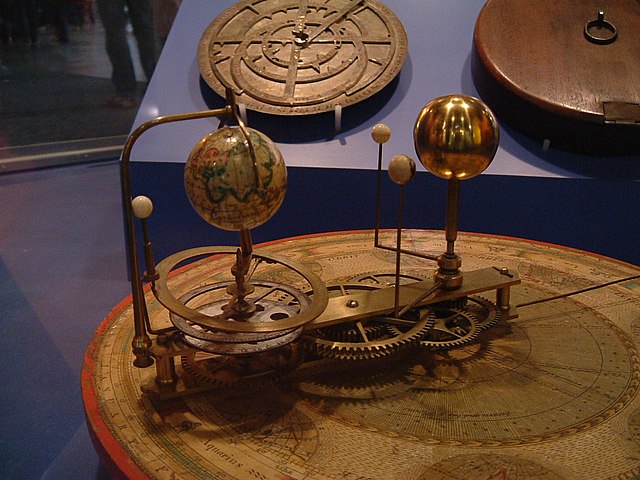Solar System models, especially mechanical models, called orreries, that illustrate the relative positions and motions of the planets and moons in the Solar System have been built for centuries. While they often showed relative sizes, these models were usually not built to scale. The enormous ratio of interplanetary distances to planetary diameters makes constructing a scale model of the Solar System a challenging task. As one example of the difficulty, the distance between the Earth and the Sun is almost 12,000 times the diameter of the Earth.
A 1766 Benjamin Martin mechanical model, or orrery, on display at the Harvard Collection of Historical Scientific Instruments
An orrery is a mechanical model of the Solar System that illustrates or predicts the relative positions and motions of the planets and moons, usually according to the heliocentric model. It may also represent the relative sizes of these bodies; however, since accurate scaling is often not practical due to the actual large ratio differences, a subdued approximation may be used instead. Though the Greeks had working planetaria, the first orrery that was a planetarium of the modern era was produced in 1713, and one was presented to Charles Boyle, 4th Earl of Orrery – hence the name. They are typically driven by a clockwork mechanism with a globe representing the Sun at the centre, and with a planet at the end of each of the arms.
A small orrery showing Earth and the inner planets
Antikythera mechanism, main fragment, c. 205 to 87 BC
Carlo G Croce, reconstruction of Dondi's Astrarium, originally built between 1348 and 1364 in Padua
Astronomical clock (Venus-Mercury side) by Eberhard Baldewein, 1563–1568. Exhibit in the Mathematisch-Physikalischer Salon of Dresden, Germany.





